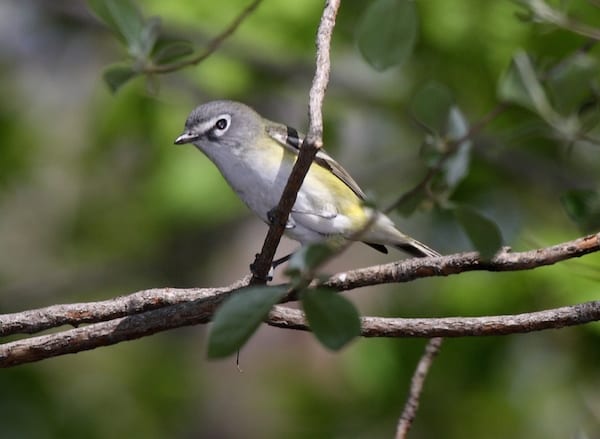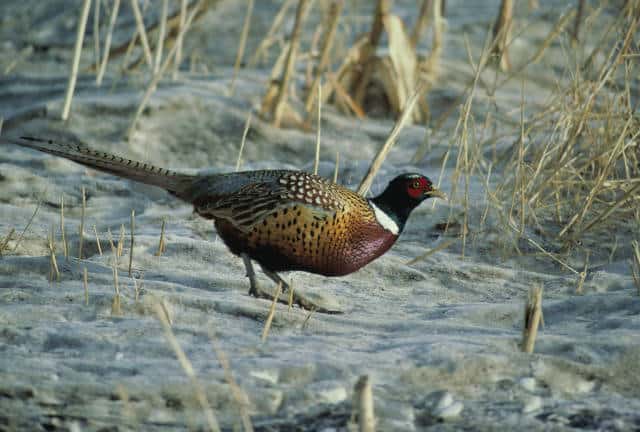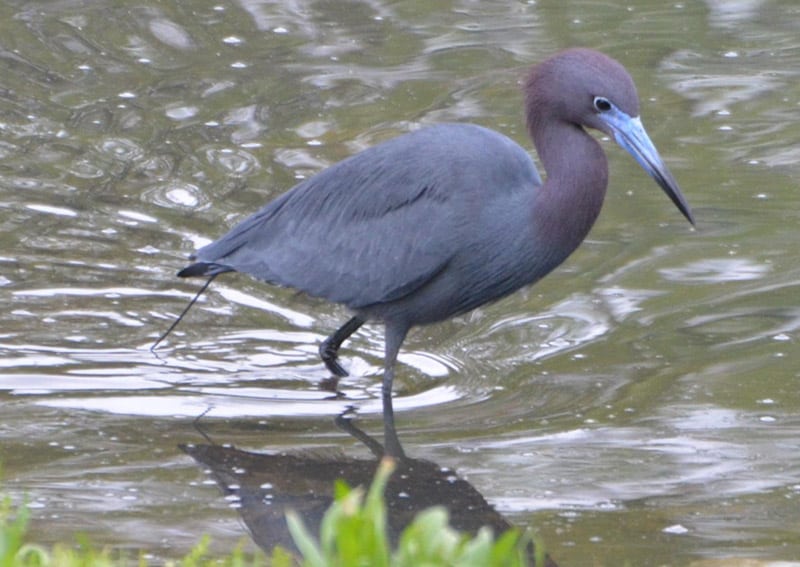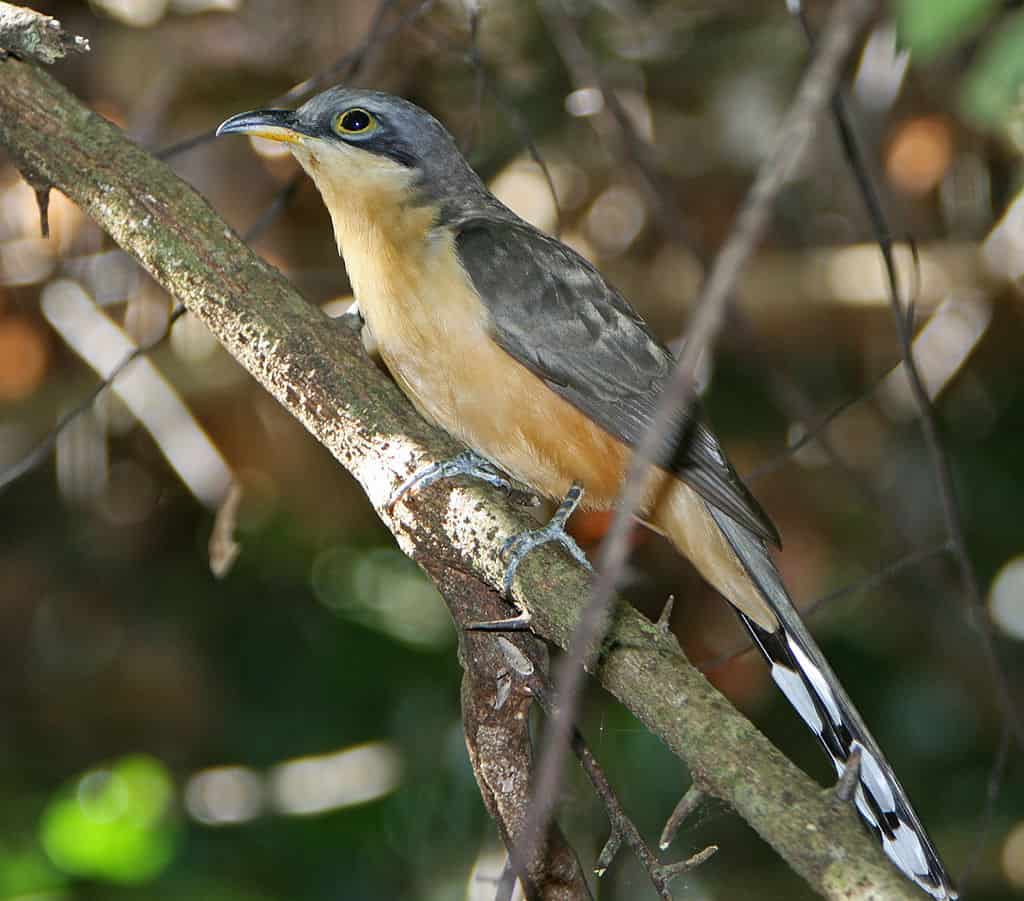The blue-headed vireo is five inches long and weighs .56 ounces. Its solid gray-blue hood contrasts with its white spectacles (the combination of an eye ring and a supraloral line that contrast with the rest of the face) and throat. The hood of females and immatures is partly gray. All ages have a bright olive back, yellowish wing bars, and distinct white on the outer tail, and bright yellow sides and flanks, sometimes mixed with green.
Listen For
The blue-headed vireo breeds in northeastern woodlands, reaching westward through the boreal forest of the prairie provinces to Alberta, and south in the Appalachians to the Carolinas. They can be found high in forest canopies.
Blue-headeds have a sweet song—high, clear phrases with sweet notes: see you, cheerio, be-seein-u, so-long, seeya.
Find It
The blue-headed vireo prefers mixed forests (hardwoods and pines) within its breeding range. Because this species is not as active a forager as some other vireos, it is often first located by sound.
Feeding Behavior
Blue-headed vireos like insects. They forage for them slowly and accurately in the mid level of the forest in the outer, smaller twigs of the trees.
Nesting Behavior
These birds build their nest suspended from a fork in a tree. Hair, strips of bark, grasses, and spider webs make up the outside while the inner cup is lined with little twigs and needles.
Wow!
Many blue-headed vireos spend the winter in the Southeast, where they survive on berries if insects are not available. Most other vireos spend the winter in the insect-rich tropics. Also, this bird was formerly known as the solitary vireo but the species was split into three separate species, the others being Cassin’s vireo and plumbeous vireo.




